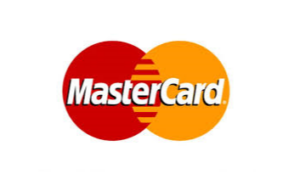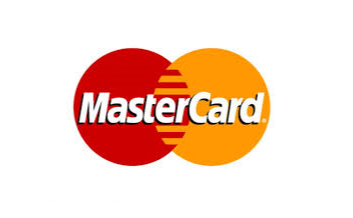The Mastercard Index of Women Entrepreneurs finds that across different markets all over the globe, Filipino women make the greatest strides in the workforce.
Favorable entrepreneurial framework and conditions characterized by high levels of support for SMEs, ease of doing business, and access to financial services and academic programs are typically the key factors for women advancement in business. Such is reaffirmed in The Mastercard Index of Women Entrepreneurs 2019 (MIWE) through the findings for high-income countries like the U.S., New Zealand, and Canada. The Philippines, however, stood out as a promising market showing that women in less wealthy and developed economies can still thrive in entrepreneurial businesses.

Strong representation of women in the Philippine workplace
Ranking first out of 58 economies for the first component, “Women’s Advancement Outcomes,” the Philippines stood out in terms of women’s ability to thrive as business leaders, professional and technical workers, entrepreneurs, and labor force participants. Three other markets in Asia Pacific joined the Philippines in the top ten ranks: Thailand (rank 4), Vietnam (rank 7) and New Zealand (rank 10).
The index also highlighted that Filipino women are fairly represented in the workforce, with 52% of business leaders and 58.2% of professional workers being female. Filipino women were also found to be just as likely as their male counterparts to go into entrepreneurship.
Limited access to education and funding
Unlike the previous metric, the Philippines was not able to join other Asia Pacific markets in the top spots for “Knowledge Assets and Financial Access”. This component of the index gauges women’s progress and the degree of marginalization they face as financial customers and academically in terms of opportunities to enroll in tertiary institutions, women’s inclination to borrow or save for business, and support rendered for SMEs. Among all 58 countries evaluated, the Philippines at rank 20 lagged behind a mix of high income, upper middle income and similar lower middle-income markets across different regions including nine other markets from Asia Pacific. The index noted that in the country, financial support rendered for SMEs is quite weak. This is indicated by gender gap in access to financial services, perception on physical infrastructure, and accessibility, range and effectiveness of government programs. Nevertheless, the Philippines was noted for being one of the markets with the least gender divide when it comes to borrowing or saving for business.
Lack of enabling entrepreneurial conditions
Out of the three components of the index, “Supporting Entrepreneurial Conditions” saw the lowest evaluation of the Philippines at rank 38. This gauges how supporting entrepreneurial conditions are either enablers or constraints of women business ownership through four indicators: ease of doing business, cultural perceptions of women entrepreneurs, quality of governance, and entrepreneurial supporting factors. This part of the index was dominated by wealthy and developed countries in North America (U.S. and Canada) and Europe (Switzerland, Canada, Denmark, the U.K. and Ireland) where highly supportive entrepreneurial conditions appear to play a role in advancing women’s ability to thrive in business. These countries have business environments that generally encourage and support entrepreneurial success, risk taking, creativity and innovativeness, and individuality.
The Philippines: A promising outlier for women in business
To finally round up its ranking, the index compounded all components for each of the 58 markets. High-income, innovative and well-developed economies such as the U.S., New Zealand, Canada, Israel, Ireland, Taiwan, Switzerland, Singapore, the U.K., and Poland topped the overall ranks as these countries have also secured the better ranks for each component of the index. This then reaffirms that markets with highly favorable entrepreneurial frameworks and conditions tend to drive women towards entrepreneurship. However, the Philippines also proved that women in less wealthy economies are able to overcome infrastructural shortcomings as it broke the streak of high-income countries at rank 11.
While the Philippines was part of the lower rankings for “Supporting Entrepreneurial Conditions,” this was balanced out by having topped all 58 countries for “Women’s Advancement Outcomes”. The Philippines thus reached a high overall ranking as it was able to enter the upper half of rankings for “Knowledge Assets and Financial Access”.
While these evaluations give insight on how promising the entrepreneurial framework in the Philippines already is, the MIWE results also show how the balance of different factors can contribute to an even better environment for women in business. It shows the importance of designing policies and solutions with women in mind, and in such a way that allows for inclusive growth in business. By ensuring that all women in the country can access financial resources such as bank accounts, credit and insurance, and sufficient education, the Philippines will be able to foster a more supportive environment for entrepreneurship and empower women with the right tools and mindset to proactively pursue business.
Methodology
The Mastercard Index of Women Entrepreneurs 2019 is the third report profiling the progress and achievement of women entrepreneurs or business owners across 58 societies around the world. Based on data available publicly from international organizations including the International Labour Organization, UNESCO and the Global Entrepreneurship Monitor, the study represents nearly 80% of the world’s female labor force and highlights how the 58 markets differ at 3 levels: (i) Women’s Advancement Outcomes, (ii) Knowledge Assets & Financial Access, and (iii) Supporting Entrepreneurial Factors. The results also shed light on which factors and conditions are the most conducive in helping to narrow the gender gap among female entrepreneurs or business owners, or the most inhibitive and disabling, thereby weighing on women’s ability to thrive in business.
Download the full report: https://newsroom.mastercard.com/wp-content/uploads/2019/12/Mastercard-Index-of-Women-Entrepreneurs-2019.pdf




